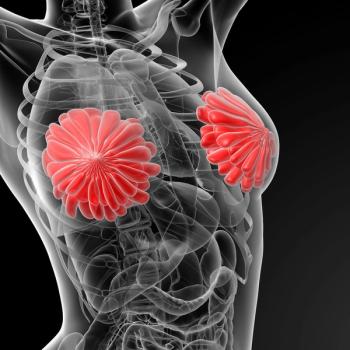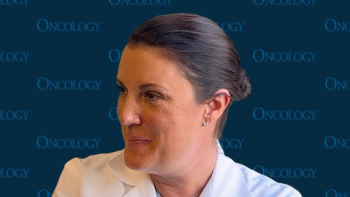
- ONCOLOGY Vol 14 No 8
- Volume 14
- Issue 8
New Combined Therapies for Breast Cancer
The aim of this study was to assess the efficacy and toxicity of the combination of docetaxel (Taxotere) and vinorelbine (Navelbine), every 15 days, in anthracycline-pretreated metastatic breast cancer patients.
The aim of this study was to assess the efficacy and toxicity of the combination of docetaxel (Taxotere) and vinorelbine (Navelbine), every 15 days, in anthracycline-pretreated metastatic breast cancer patients.
Forty-eight patients were enrolled in the study between December 1998 and January 1999. Their average age was 53.9 years (range: 2972 years). Treatment consisted of docetaxel 60 mg/m² IV day 1 and vinorelbine 25 mg/m² IV day 1, every 15 days. If there was grade 3/4 neutropenia, we added prophylactic granulocyte colony-stimulating factor (G-CSF, filgrastim [Neupogen]).
Metastatic locations included breast (8 patients), bone (21), local chest wall (10), liver (16), node (10), lung and pleural effusion (9), lymphangitis (4), bone marrow (1), and peritoneal carcinomatosis (1). All patients had been treated previously with anthracyclines, 28 had received previous hormonotherapy, and 24 previous radiotherapy. Thirty-four patients were evaluable for clinical response.
Results were as follows: complete response, 2 patients (5.8%) (1 dermal lesion and 1 lung); partial response, 16 (47%); overall response, 18 (52.8%). We used prophylactic G-CSF in 80 cycles. Hematologic toxicity occurred in 209 cycles (without G-CSF): neutropenia (grade 1, 7.6%; grade 2, 10.5%; grade 3, 21.5%; grade 4, 7.6%) and neutropenic fever (22 episodes). Nonhematologic toxicity was seen in 289 cycles: dermal toxicity (grade 1, 2.4%, grade 2, 2.0%); paresthesias (grade 1, 2.0%; grade 2, 4.1%); conjunctivitis (4.8%); edemas (3 patients); asthenia (18.3%); constipation (2.7%); and alopecia (100%). There was one toxic death due to neutropenic enterocolitis and one anaphylactic reaction.
CONCLUSION: This is an effective combination. Hematologic toxicity was moderate; thus it is necessary to use prophylactic G-CSF.
Articles in this issue
over 25 years ago
Commentary on Abstract #280over 25 years ago
Commentary on Abstract #527over 25 years ago
Commentary on Abstracts #986 and #1015over 25 years ago
Commentary on Abstract #1916over 25 years ago
Commentary on Abstracts #341, #347, and #333over 25 years ago
Commentary on Abstracts #407 and #424over 25 years ago
Commentary on Abstracts #349 and #1259over 25 years ago
Commentary on Abstracts #317 and #322over 25 years ago
Commentary on Abstracts #254 and #330over 25 years ago
Commentary on Abstract #336Newsletter
Stay up to date on recent advances in the multidisciplinary approach to cancer.

















































































